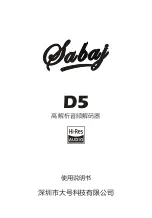
TAMC900 User Manual Issue 2.0.1
Page 40 of 71
7 Interrupts
Legacy interrupt messages and message signaled interrupts (MSIs) are supported by the firmware. In
dependency of the chosen mode - defined by the PCI header and system (driver) software – one of the two
methods is used.
In legacy interrupt mode INTA interrupts are asserted in case of an interrupt event.
The MSI mode uses a single vector for interrupt signalize. A larger vector would simplify the detection of an
interrupt source but increase the implementation and system resource efforts. Moreover it is not safe to
obtain the resources for a multi-vector MSI from the system.
7.1 Interrupt Sources
IRQ
Description
IRQCH0
IRQCH1
IRQCH2
IRQCH3
IRQCH4
IRQCH5
IRQCH6
IRQCH7
Every channel can generate an interrupt event if it is enabled appropriately. The
General DMA Status register can be used to detect which channel caused the
interrupt. The corresponding Channel DMA Status register must be read
afterwards to obtain further information about the interrupt.
Table 7-1 : Interrupt Sources
7.2 Interrupt Handling
IRQ
Description
IRQ Enable
IRQ Ack.
IRQCH0
Channel 0 Interrupt
IRQCH1
Channel 1 Interrupt
IRQCH2
Channel 2 Interrupt
IRQCH3
Channel 3 Interrupt
IRQCH4
Channel 4 Interrupt
IRQCH5
Channel 5 Interrupt
IRQCH6
Channel 6 Interrupt
IRQCH7
Channel 7 Interrupt
Channel
Configuration
Register
Corresponding
Channel Status
Register
Table 7-2 : Interrupt Handling
For all interrupts should be noted that every DMA channel is treated as one source. This causes that an
interrupt that occurs while a pending interrupt is present will not generate a new interrupt signal.
Consequently interrupts have to be acknowledged after their occurrence.
The use of Message Signaled Interrupts may introduce spurious interrupts as described in the
PCI Specification.















































